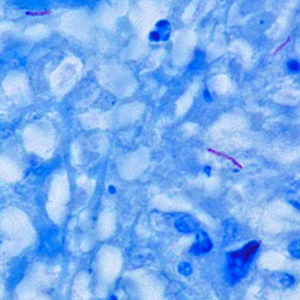Role of IP-10 during follow up of pulmonary tuberculosis patients

All claims expressed in this article are solely those of the authors and do not necessarily represent those of their affiliated organizations, or those of the publisher, the editors and the reviewers. Any product that may be evaluated in this article or claim that may be made by its manufacturer is not guaranteed or endorsed by the publisher.
Authors
Pulmonary tuberculosis (PTB) is an infectious disease caused by Mycobacterium tuberculosis (MTB) and is associated with significant mortality and morbidity. There has been a number of advances in the diagnosis of PTB but there is a need for simple blood based diagnostic test. A follow up of the patients on treatment remains challenging. This study was planned to evaluate the role of IP-10 in the follow up of PTB patients. A total of 60 subjects were enrolled in the study, 40 patients with confirmed diagnosis of PTB and 20 healthy controls. The value of interferon (IFN)γ inducible protein 10 (IP10) was measured in all the subjects at the start of the treatment and at a follow up of two months. Mean age of the study subjects was 40.96 years. Mean duration of symptoms at presentation was 1 month and 17 days. The induration on Tuberculin skin test (TST) was between 10-20mm in most (62.5%) of the study subjects. Majority (45%) showed moderately advanced disease on chest x-ray. There was no association of IP-10 with TST diameter and gene x-pert. Similarly, no significant difference in IP-10 levels was found in relation to sputum grading and x-ray score at diagnosis and after 2 months of treatment. IP-10 has very limited role in diagnosis of active TB in especially in high TB burden countries. The role of IP-10 in follow up of PTB patients could not be ascertained by our study. However, more studies are needed in this pretext with larger sample size and extended duration of follow up.
How to Cite

This work is licensed under a Creative Commons Attribution-NonCommercial 4.0 International License.






